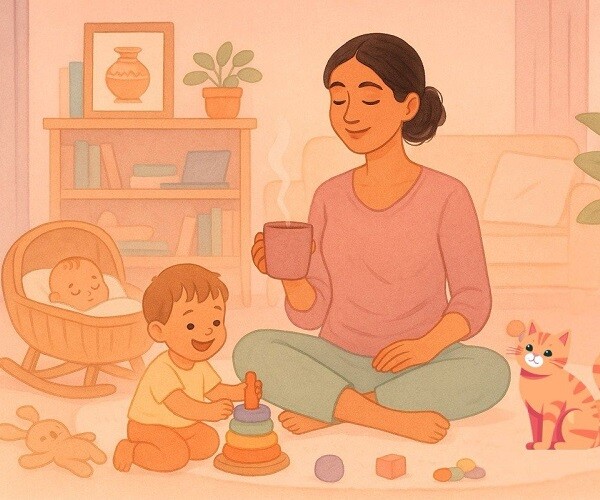Educators note that the difference in children’s adaptability to new environments stems from their family upbringing. In reality, the “magic” behind children’s ease of adjustment lies in the type of family they come from.


Families that foster self-reliance: Children develop confidence
Some children can feed themselves, dress themselves, and tidy up their toys even at a young age. This is not an innate “talent” but a result of their family’s influence.
Parents understand that self-reliance is the foundation of a child’s confidence. Instead of doing everything for their children, they encourage them to try tasks like putting on their shoes (even if they don’t get it right) and eating by themselves (even if they make a mess).

Families that foster self-reliance from an early age.
This seemingly hands-off approach actually helps children build confidence in their abilities, thinking, “I can do this.” As a result, when faced with new environments, their anxiety lessens as they realize they can handle small tasks and challenges.
Expert advice: Provide children with more opportunities to try and fail in a safe environment, such as buttoning their shirts or putting away toys. Avoid intervening when they make mistakes, and instead, guide them to try again.

Emotionally stable parents: Creating a sense of security for children
Young children are more perceptive than we think. If a parent tries to hold back tears and their voice shakes as they say goodbye at school, the child will sense their anxiety, and their crying may intensify. On the other hand, a parent who smiles and speaks calmly when saying goodbye will boost their child’s confidence.
Therefore, parents who maintain emotional stability will convey a sense of safety to their children. Instead of saying, “I won’t need you anymore if you keep crying,” they assure their child, “Be a good kid, and I’ll pick you up at 4 p.m. sharp.” When this promise is kept, the child gradually develops a sense of trust.
Expert advice: Show through your actions that “You’re safe, so feel free to play and have fun.”

Parents who make the most of their time apart: Teaching children that leaving doesn’t mean disappearing
Creating a sense of security doesn’t mean being together 24/7; it’s about helping children understand that short-term separations are a normal part of life.
Some parents create opportunities for their children to practice being independent, such as letting them play alone for 30 minutes or stay with relatives for a short while. This helps children understand that “After I leave, Mom will definitely come back.”
Expert advice: In daily life, parents can help their children adjust by spending short periods apart, such as “I’ll go downstairs to get the car and be back in 10 minutes.” Gradually increase the duration, and children will adapt better to new environments.

Parents help children adjust by spending short periods apart.

Parents who introduce kindergarten early: Helping children form mental expectations
If possible, parents should take their children to visit the kindergarten before the new school year starts.
This helps children familiarize themselves with the classroom, playground, and facilities. When they start school, everything becomes less unfamiliar—they know where the toys are, what the bathroom looks like, and who their teacher is.
Expert advice: Help children become familiar with the environment beforehand, or use simulated games to prepare them for kindergarten.

Use simulated games to prepare children for kindergarten.

Harmonious family atmosphere: Teaching children empathy and love
In these families, parents typically communicate calmly, even when they disagree. Children learn from their parents’ example and develop a mindset that there’s always a solution to every problem. As a result, when faced with new environments, they approach them with curiosity rather than anxiety.
Expert advice: Family is a child’s first emotional school. When parents remain calm, children learn to cope with changes calmly as well.

Parents communicate calmly, even when they disagree.
True safety isn’t about teaching children not to cry but about instilling the belief that someone is always waiting for them at home.
Kindergarten is one of the first hurdles children face in life, and it’s essential that they understand there’s always a helping hand to catch them if they fall. This support gives them the confidence and security they need to explore the world outside.







































